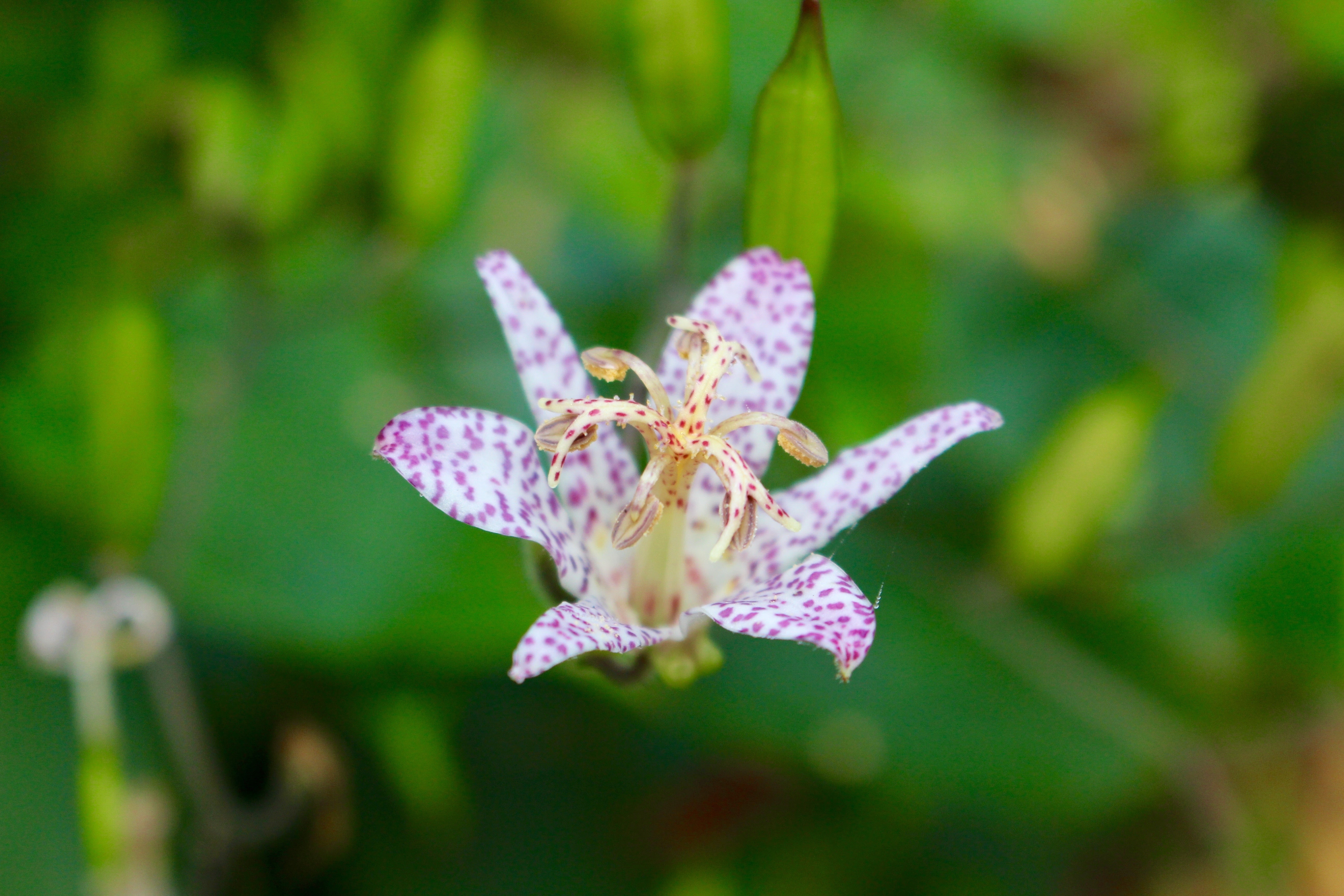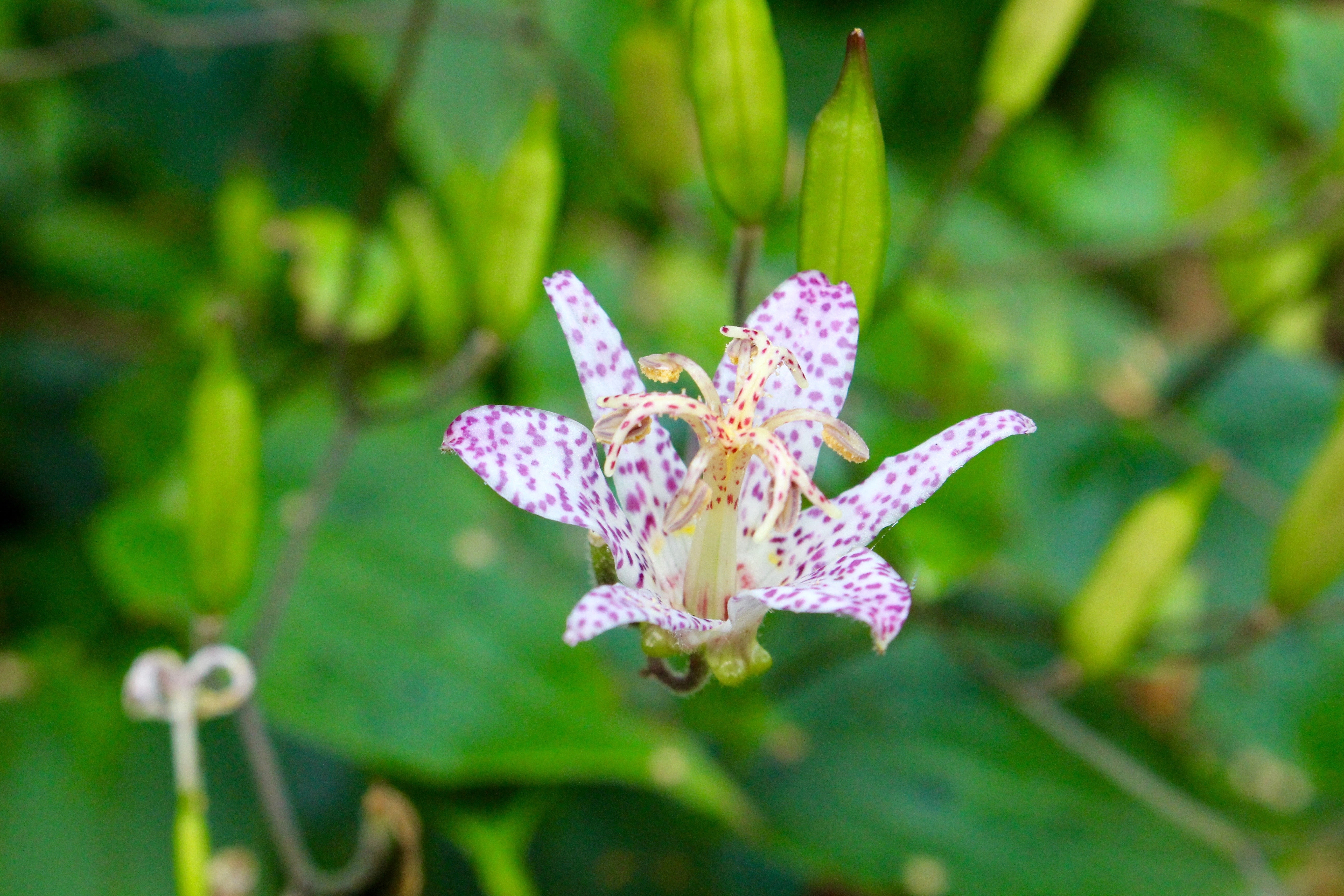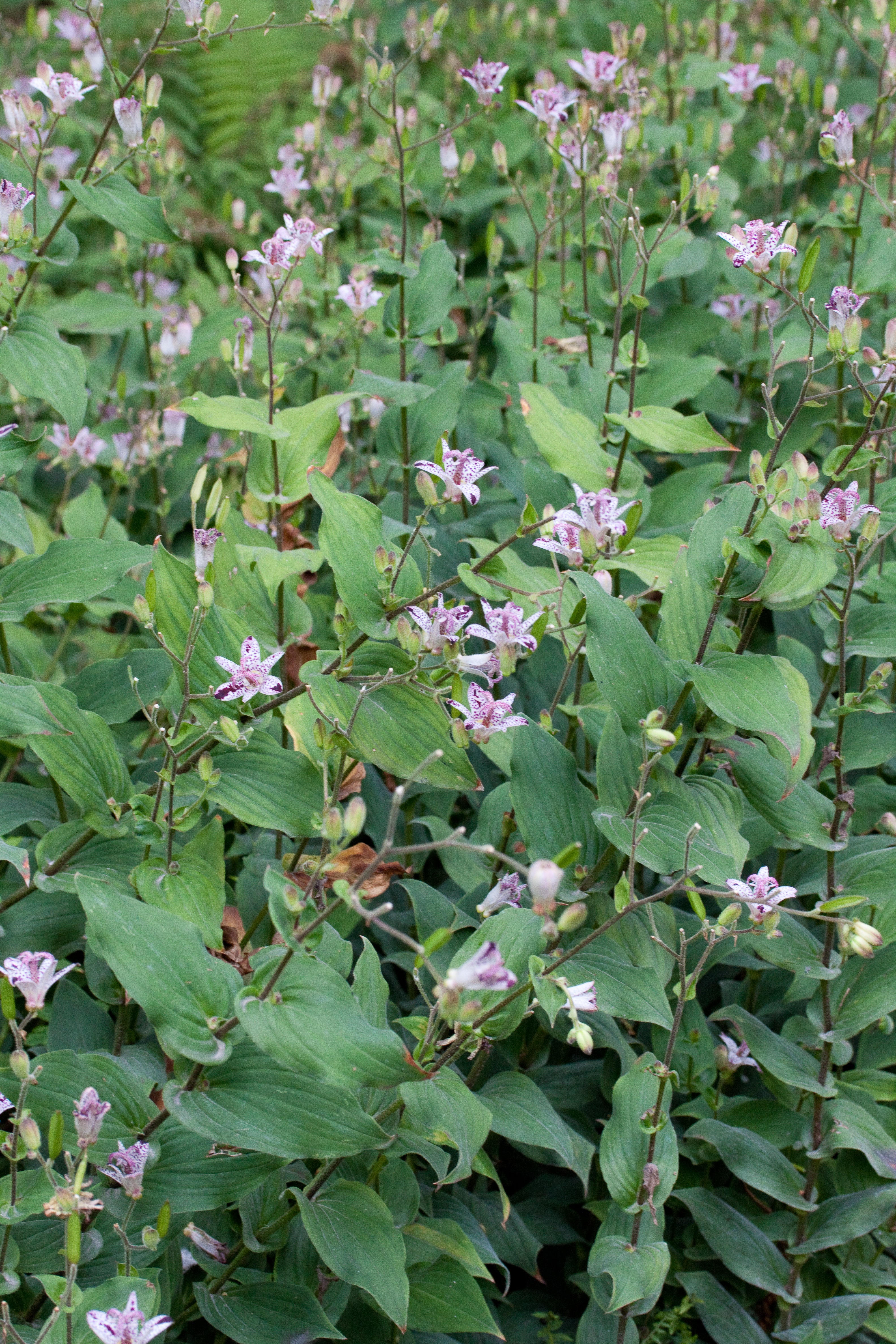Tricyrtis formosana Stolonifera Group
Approx. 0.5 litre pot
About this cultivar:
Tricyrtis formosana Stolonifera Group has elliptic leaves with more creeping rhizomes, compared to the fomrosa species ( Stolonifera means having stolons or rooting runners). So it tends to be a bit more vigourous.
Tricyrtis formosana, commonly called toad lily, is a herbaceous shade-loving perennial of the lily family that typically grows in a spreading clump. It is native to shaded areas of forests, thickets and roadsides in Taiwan. Small, star-shaped, lily-like flowers bloom in branched clusters. Flowers are white with heavy reddish-purple spotting and yellowish throats.
The species name is in reference to this species being native to Formosa (now Taiwan). Common name has a number of possible origins, the simplest one being the resemblance of the spotted flowers to the skin of some toads (colourful toads in Taiwan I guess)
- Position: Full sun, partial shade
- Soil: Almost any soil, grows well in Ballyrobert
- Flowers: June, July, August, September
- Other features: Dappled Shade or Full Shade Loving, Grows well in Ballyrobert, Dappled Shade or Full Shade Loving
- Hardiness: H6 - Hardy in all of UK and northern Europe (-20 to -15°C), Fully hardy, grows well in Ballyrobert
- Habit: Clump forming, mat forming
- Foliage: Deciduous
- Height: 45 - 75 cm (1.5 - 2.5 ft)
- Spread: 45 - 75 cm (1.5 - 2.5 ft)
- Time to full growth: 2 to 5 years
- Plant type: Herbaceous Perennial
- Colour: Green, pink, white
- Goes well with: --
About this genus:
Tricyrtis is a genus of flowering plants in the Lily family (Liliaceae), with approximately eighteen species. The species are commonly known in English as Toad lilies. It has a native range from the Himalayas to eastern Asia, including China, Japan, Philippines and Formosa,and a few species are cultivated for their ornamental qualities in other parts of the world.
Tricyrtis are herbaceous perennials with creeping rhizomes. The stems are typically erect or maybe ascending, and sometimes branched from the middle to the top. The showy, solitary flowers are bisexual. The tepals are white or yellow with purplish spots, usually recurved or reflexed.
A lovely genus, despite the common name, the cultivars we have are easy to grow in any soil that isn't too dry or too wet, and in any situation that isn't deep full shade.






